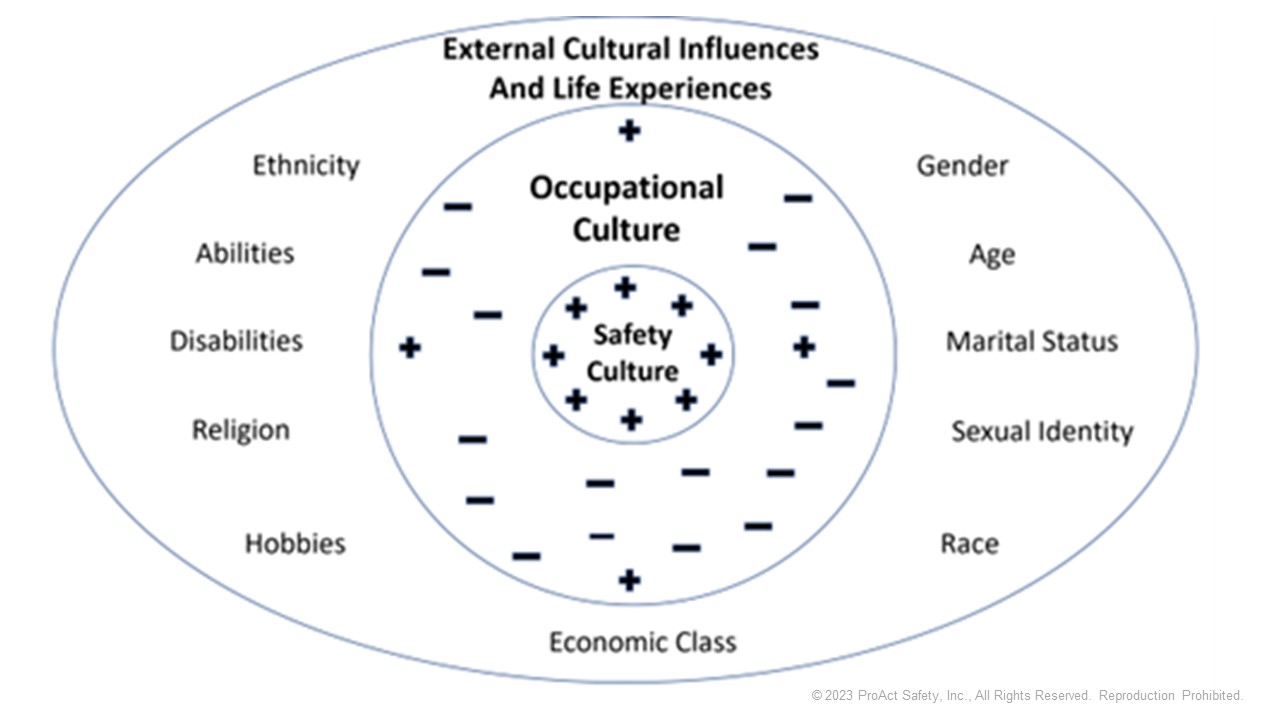BIC - January 2023
By: Shawn M. Galloway
Printable Version
While working with a client recently, a conversation was held to help the leadership understand the diminishing returns they were facing, with the sole effort to improve safety culture. I introduced them to one of my models called, External and Internal Influences on Safety Cultures, which Kenny, the EHS manager, dubbed "The Circle Thingy." There is no such thing as a safety culture, yet every organization has one that is influenced by the company culture and cultures within the community.
Culture is a set of beliefs that govern behaviors resulting in common reinforcing experiences and stories. Cultures maintain status quo or change based on these experiences and stories. Every large group has subcultures within the established culture. In nonprofit organizations, there are the salaried employees and the volunteers, the executive staff and the administration. In public and private organizations, there are unique cultures by location, level, department and even by shift.
To add to the cultural complexity, every employee has their own personal, perceptual filter they experience life through, based on who they are, how they were raised, how they choose to live their life and who they identify with. These perspectives are brought to work and can have an influence on how effective the organization is at creating shared values.
The experiences that employees have with corporate interactions affect their beliefs and behaviors at their individual locations. Similarly, their non-safety related experiences when interfacing with their boss and other departments affect the safety culture within the occupational culture they belong to.
Regardless of how hard a leader works to positively impact the safety culture, that leader will only be as successful as what their people experience within the overall occupational culture. For example, a leader can work to improve focus, trust, communication, engagement, collaboration, accountability and ownership specific to safety. The success that leader experiences may be negated based on common interactions their people have with others within the organization on topics outside of occupational safety.
Leaders require a strategy that directly addresses creating the desired safety culture, but this strategy should be tied to meeting the overall business objectives and improving the overall business culture. The creation of this strategy should be led by the leadership throughout the business with input from the culture they are trying to influence or change. It should not be created in a vacuum by the person leading or responsible for safety improvement efforts. Safety will never be a group-shared value or perceived as the way business is conducted when it is delegated solely to the safety leader. Culture is a byproduct. Work to continuously improve what influences the many cultures within your culture, and get leaders and key influencers involved. Culture change happens best from within.

Figure: External and Internal Influences on Safety Cultures

Shawn Galloway, CEO of ProAct Safety, is an expert in safety excellence. With almost thirty years of experience, he is a highly sought-after advisor, keynote speaker, and expert witness. Shawn has become a trusted partner to leading organizations across various industries worldwide. He ranks in the top 1% of the most prolific writers in his field, having authored over 500 articles and several bestselling books. He also launched the world's first safety podcast, Safety Culture Excellence©. As a recognized authority in safety, Shawn has received awards such as being named among the Top 50 People Who Most Influence EHS and a Top 10 Speaker, among others.
He is a regular guest on Bloomberg, Fox News, The Daily Mail, Dubai One, U.S. News & World Report, Sirius Business Radio, Wharton Business Daily, and leading safety magazines and podcasts. Shawn also serves as a member of the Harvard Business Review Advisory Council, Forbes Business Council, and Fast Company Executive Board, enabling his influence to shape safety thinking and strategy at the executive level.
